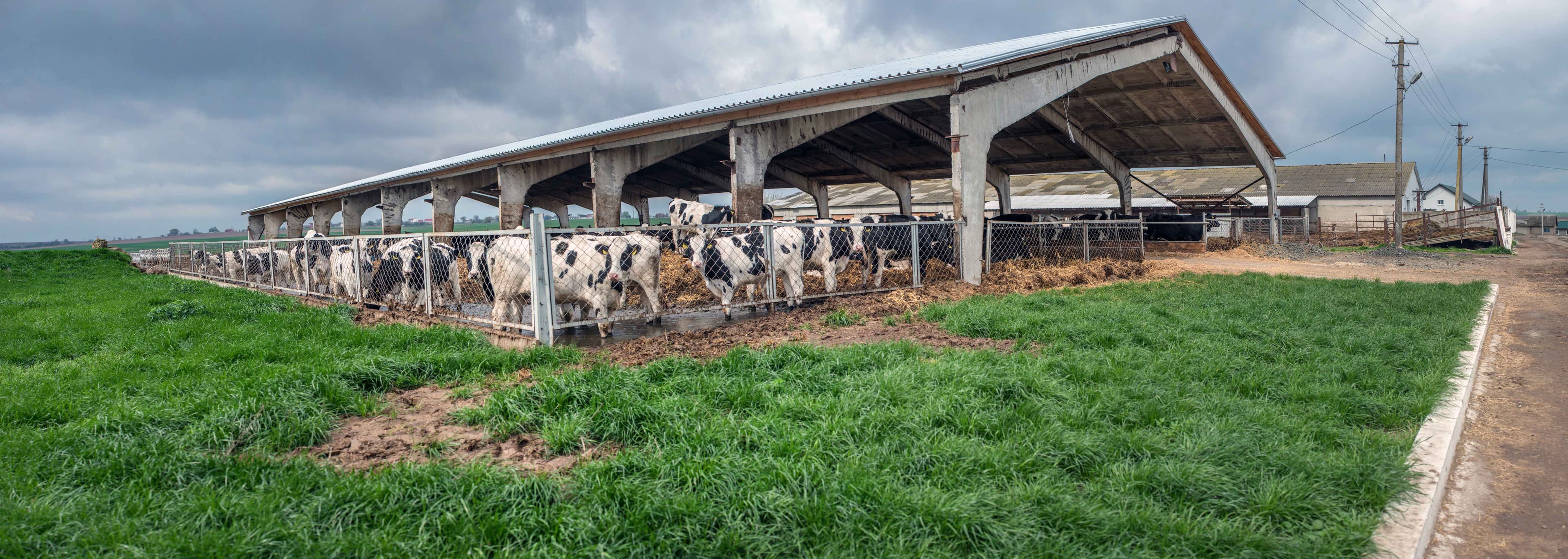The Solution to Cows vs. Climate Change Is More Methane?
The future of sustainable farming and ranching is going to be producing more methane.
Wait, just hear us out.
Spread out over about a million square acres on North America’s Great Plains are 87.2 million cattle. The livestock farmers caring for those cows produced 27.95 billion pounds of meat and 226.6 billion pounds of milk last year. The cows produced about 2 billion pounds of methane.
To farmers and livestock ranchers, methane production probably isn’t a big deal. Yeah, you might spit your coffee out if you hear a heifer rip a nasty one, but as far as ranking on a list of everyday concerns, methane is right between robot apocalypse and meteor strike.
However, as concerns over our warming planet intensify, everyday farmers and ranchers are turning their attention to innovative practices that not only reduce their methane emissions but also bolster the financial resilience of their operations. From dietary adjustments for livestock to harnessing renewable energy sources, livestock farmers are surprisingly at the forefront of humanity's increased push to adopt sustainable agriculture practices.
One of the most promising methane-mitigation solutions gaining traction is dietary modification. By adjusting the nutritional composition of their animals' feed, farmers and ranchers are changing the microbial makeup in their animals' digestive systems, thereby reducing methane production at the source. They do this by incorporating high-quality forages and legumes into the diet that help improve digestion efficiency, which lowers methane emissions per unit of feed consumed.
In fact, a study conducted in 2021 by researchers at the University of California, Davis, showed that using red seaweed (Asparagopsis) as a feed supplement can reduce both methane emissions and feed costs without affecting meat quality. If these findings can be scaled up and commercialized, they would transform cattle production.
Supplementing feed with additives, such as seaweed, essential oils, tannins and even legumes, has shown promising results in inhibiting methane-producing microbes in cattle and sheep. These additives work by altering the fermentation process within the cow’s rumen.
In addition to dietary interventions, livestock farmers are also adopting rotational grazing protocols, where animals are moved regularly between pasture paddocks. This not only improves overall soil health and biodiversity but also reduces the intensity of methane emissions from manure. By allowing pastures to take a rest between grazing periods, farmers and ranchers can promote natural carbon sequestration in the soil while also mitigating methane release by spreading it out over a much larger area.
However, cow poop is the future.
In addition to dietary modifications and tactical grazing practices, anaerobic digestion (AG) systems, aka methane digesters, are becoming more popular. Yes, we do mean popular, as a truly sustainable way to manage livestock waste. These systems are expensive, costing between $400,000 and about $4 million, but they convert crop residues, manure or pretty much any organic matter into biogas, a renewable energy source that can be easily and cheaply converted into methane.
Now wait, why would a farmer or rancher, after reading this article and moving his cows all over the place while feeding them seaweed, want to create more methane?
This is where the confluence of simple methane-capture practices and technology converge to give us a glimpse of a science-fiction-esque future.
European farmers and ranchers are already way ahead of us here, there are about 350 manure-based anaerobic digestion systems (ADs) in operation in the U.S. There are nearly 19,000 of them spread out across the European Union. Extremely limited landfill space, mercurial energy prices and very enticing and widespread government incentives to go net-zero have established a profitable market for farmers and ranchers to produce their own energy. There are several ADs in Europe that have been in operation for more than 20 years thanks to gargantuan investments in infrastructure.
A world where farms and ranches, either individually or as a collective, can produce their own energy and fuel is not a fantasy world.
New Holland Agriculture, a 130-year-old company based in eastern Pennsylvania, is currently selling a 180-horsepower tractor that runs on methane. If you remember the days when it cost $1,000 to fill up a tractor tank, you can appreciate that. A world where farmers and ranchers can eliminate around 17% of their budget (fuel costs) by turning their own livestock’s waste into fuel seems more useful and likely than, say, jetpacks.
Local educational outreach and knowledge-sharing initiatives are also bolstering a marketplace for the exchange of uniform best-practices and are hoping to empower farmers to adopt real methane mitigation practices.
Precision farming techniques, such as using GPS-guided equipment for precise nutrient application, are also on the horizon and will be utilized to improve crop yields and reduce the environmental footprint of farming and ranching operations.
Uncle Sugar is also stepping up with financial incentives and government programs incentivizing farmers to adopt their brand of environmentally friendly practices. Subsidies for methane digesters, tax credits for renewable energy investments, and grants for sustainable farming initiatives are enacted to empower farmers and ranchers to make meaningful changes that benefit both the environment and economic stability of their operation.
Trends indicate a growing demand for sustainably produced meat and dairy products, providing farmers with an opportunity to align their practices with consumer preferences while also helping those adorable polar bears.


